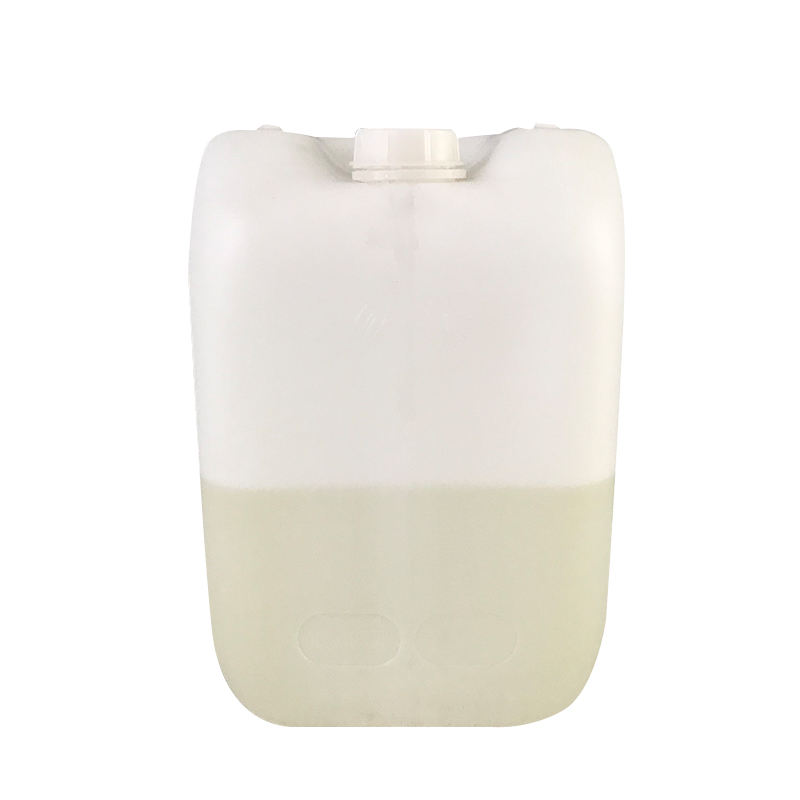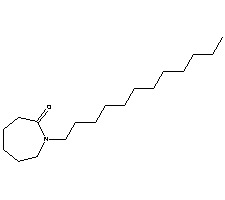


| Item | Index |
|---|---|
| Appearance | Colorless transparent viscous liquid |
| Content(%) | ≥95.0 |
| Refractivity | 1.470-1.473 |
| Relative density | 0.906-0.926 |
| Packing | in 10kg carton(500ml/bottle), 20kg paper barrel, 25kg drum |
|---|---|
| Storage | 20℃, 2 years. |
| Shipping | Room temperature in China; may vary elsewhere |
Tel: 0086-25-52397805
E-mail: info@liwei-chem.com


| Common Names | Laurocapram | Azone | 1-dodecyl-hexahydro-azepin-2-one | ||
|---|---|---|---|
| Structure |

|
||
| CAS No. | 59227-89-3 | Boiling Point (℃) | 404.9±14.0 °C |
| Molecular Weight | 281.477 | Melting Point (℃) | '-7ºC |
| Appearance | Colorless liquid | Vapor Specific Gravity | 0.9±0.1 g/cm33 |
| HS Code | 2933990099 | Flash Point (℃) | 165.2±10.7 °C |
| Solubility | Insoluble in water, soluble in ethanol, ether, acetone and benzene | Autoignition Temperature (℃) | |
| Safety Phrases | |||
|---|---|---|---|
| RIDADR | |||
| WGK Germany | |||
| Packaging Group | |||
| Hazard Class | |||
| SYMPTOMS | PREVENTION | FIRST AID | |
| Inhalation | Cough. Sore throat. | Use local exhaust or breathing protection. | Fresh air, rest. |
| Skin | Redness. Burning sensation. Itching. | Protective gloves. | Remove contaminated clothes. Rinse and then wash skin with water and soap. |
| Eyes | Redness. Pain. | Wear safety goggles. | First rinse with plenty of water for several minutes (remove contact lenses if easily possible), then refer for medical attention. |
| Ingestion | Abdominal pain. Nausea. Vomiting. | Do not eat, drink, or smoke during work. Wash hands before eating. | Rinse mouth. Induce vomiting (ONLY IN CONSCIOUS PERSONS!). Refer for medical attention. |
1) In a reaction vessel equipped with a stirrer, add dodecane bromide and solvent oil, control the stirring speed to 30120rpm, heat the temperature of the solvent oil solution to 4595°C, add caprolactam, tetrabutylammonium bromide TBAB, hydroxide Sodium, reaction 38 hours; Bromododecane: caprolactam: sodium hydroxide is 1mol: 0.81.4mol: 0.82mol, solvent oil is greater than the quality of total raw material of reaction, a small amount of phase transfer catalyst TBAB tetrabutyl ammonium bromide;
2) Add an appropriate amount of water to the reaction solution to dissolve sodium hydroxide and the sodium bromide generated by the reaction, let stand to separate layers, and separate the lower aqueous solution; after the upper organic layer recovers the solvent oil under normal pressure, it is distilled under reduced pressure to obtain the finished product of azone. More than 92%, Azone content is more than 95%.
Mechanism of Action of Laurocapram in Agricultural Production
The osmotic effect of Laurocapram promotes the entry of active ingredients into the organism by affecting the stratum corneum on the surface of the dynamic organism. Because the space between the cells on the surface of the involved tissue increases and the defense ability decreases, the drug effect can quickly enter the body through the epidermis and directly reach the target so that it can exert its effects.
1. Mechanism of action on pests: Most pests are insects. The surface of the pests has a lipid protective layer or a hard shell protective layer. Exactly the same, each with its own emphasis. When the contact or stomach poisonous insecticide is added with Laurocapram, it first has affinity and infiltration with the surface of the pest to form a uniform drug film, destroying the surface structure of the pest, reducing its skin defense ability, and promoting insecticide. In a short period of time, the insecticide can enter the pest body and reach the action site relatively smoothly; if it is a gastric toxic insecticide, it will destroy the gastric lining of the pest and kill the pest quickly.
2. Mechanism of action on plant diseases: All kinds of crop diseases are composed of cells. Whether it is a contact agent or a systemic agent, it needs a contact and penetration process based on effective concentration. Due to the nature of the agent, the effect of entering the plant or entering the disease within a unit of time is certain. To improve the killing performance and speed, the dosage of the drug must be increased. The agent added with Laurocapram can quickly pass through the cell wall, killing diseases and protect plants.
3. Mechanism of action on weeds: All kinds of plants have a self-protective waxy layer on the leaf surface, and the waxy layer of harmful weeds, especially vicious weeds, is dense and thick. And all kinds of herbicides must come into contact with weeds and pass through the waxy layer before they can work. The herbicide added with Laurocapram is sprayed on the surface of the weeds, which can destroy the waxy layer, prompting the herbicide to work quickly to kill the weeds.